WHEN IT COMES TO CONTRASTING AVIAN ROYALTY SHE WEARS A CROWN OF IRIDESCENT BLUE, HE WEARS A CROWN OF FIERY GOLD, MAKING THEM THE PERFECT PAIR – MEET THE JAUN FERÁNDEZ FIRECROWN!
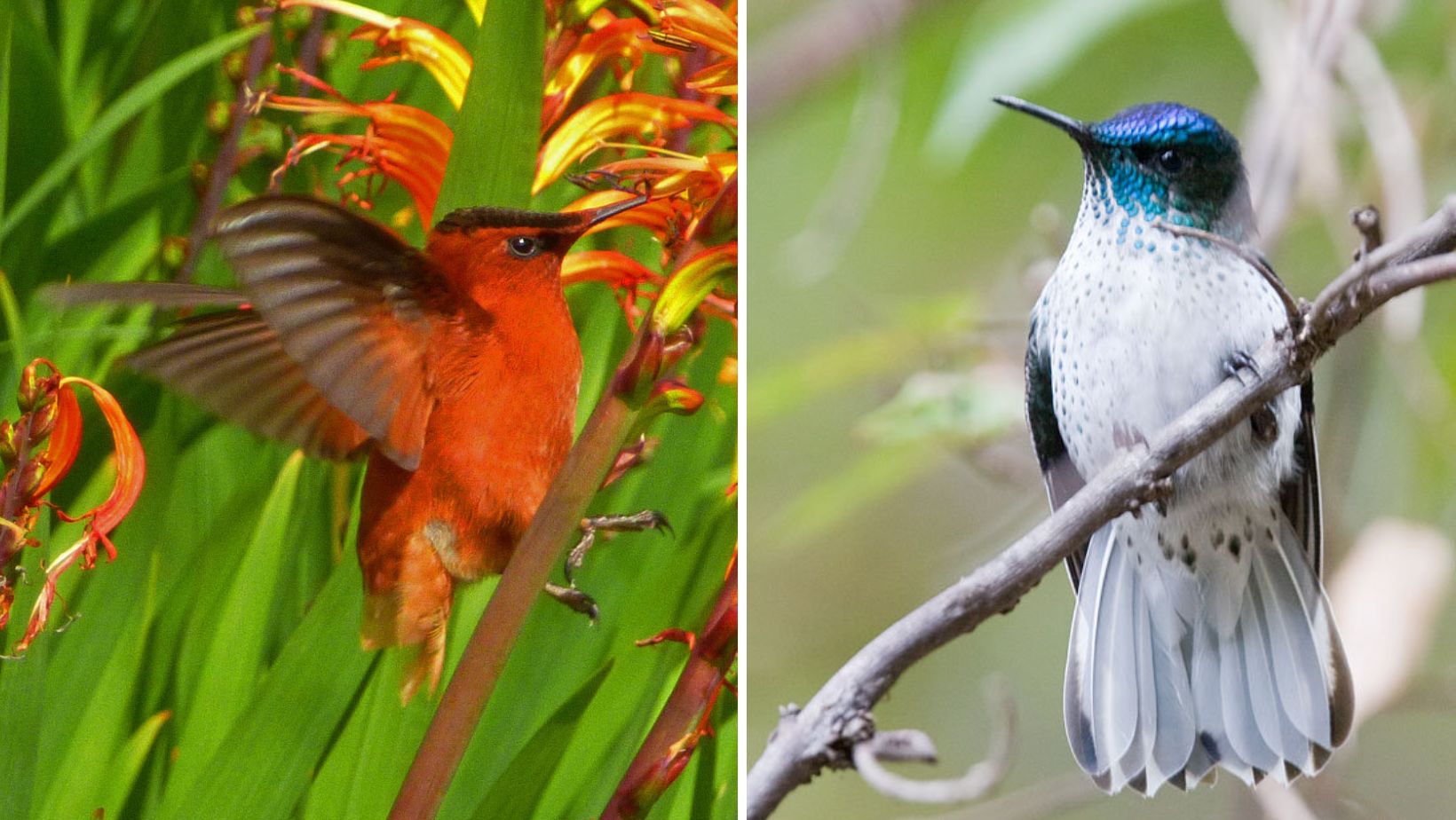
MEET THE JUAN FERNÁNDEZ FIRECROWN
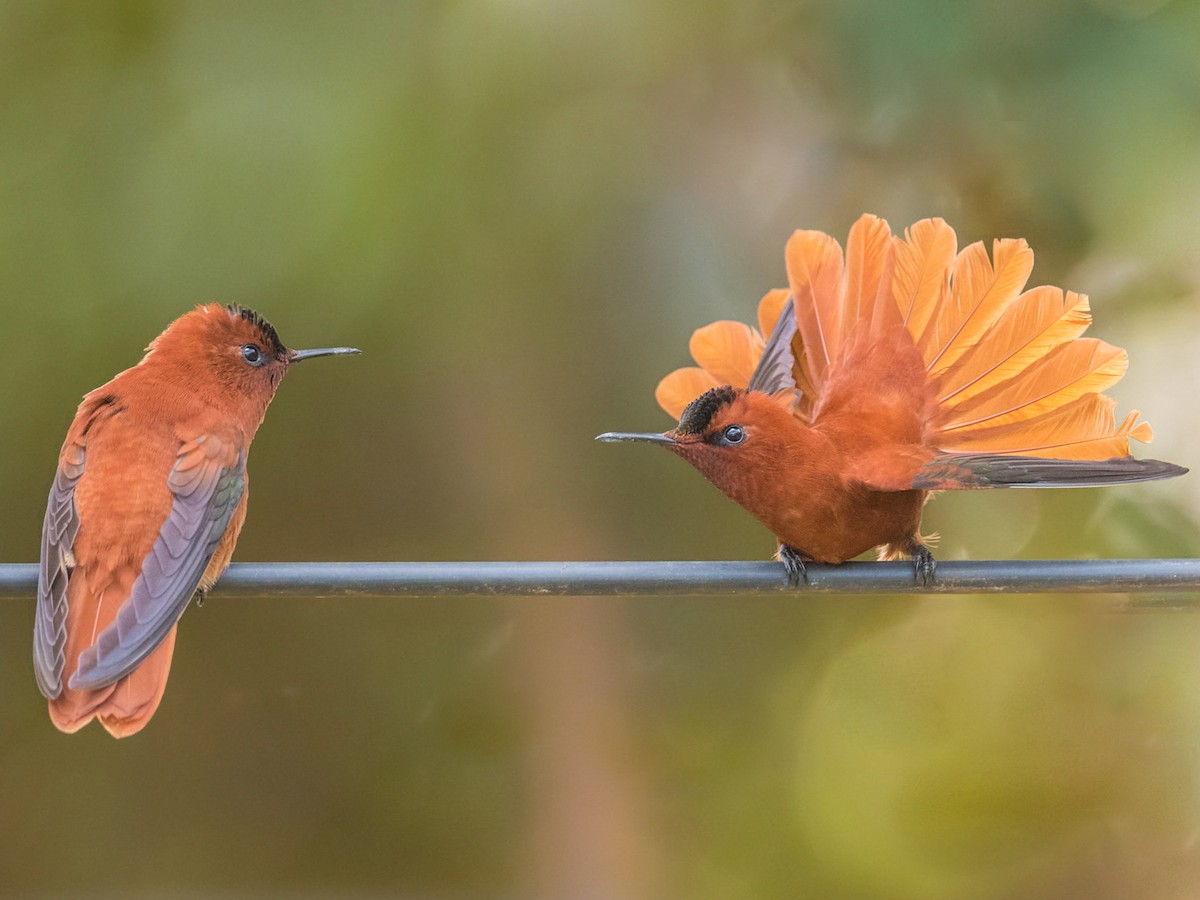
The Juan Fernández firecrown (Sephanoides fernandensis), is a hummingbird found today solely on Isla Róbinson Crusoe, one of the three-island Juan Fernández archipelago. This species of bird quite possibly shows the greatest degree of sexual dimorphism found amongst hummingbirds. For most hummingbirds, the females, while still brightly colored, lack the ornamental plumage of the males. This is not the case with the Juan Fernandez firecrown. The male is 11.5 to 12 cm in length, weighing in at 10.9 g. He is mostly cinnamon orange in color, except his wings which are dark gray. He has a black bill and an outstanding gold crown.
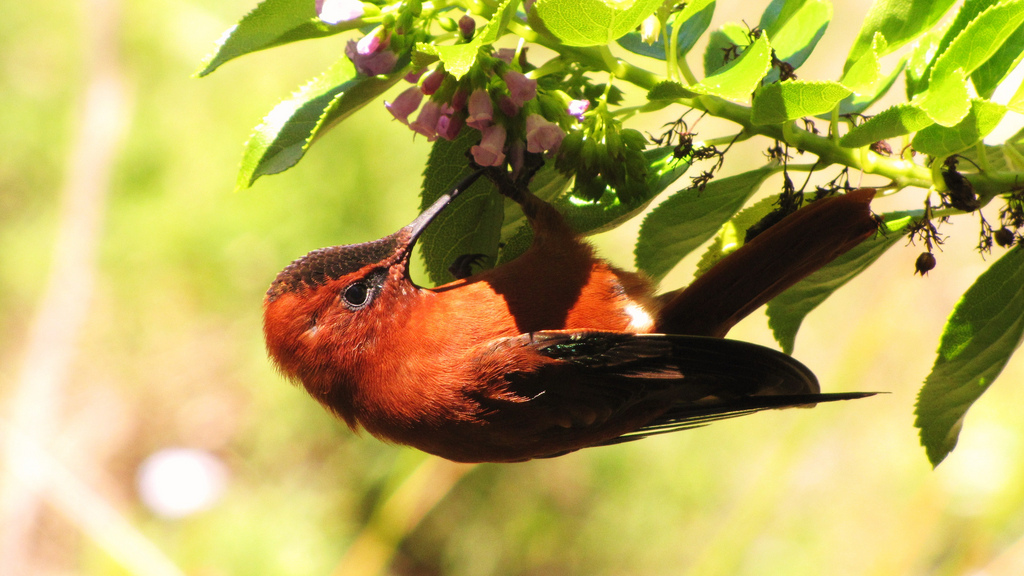
The female is smaller than the male, being 10 cm long and weighs 6.8 grams. her belly is white, dappled with green and black flecks.
Her crown is iridescent blue, and her upperparts are blue-green.
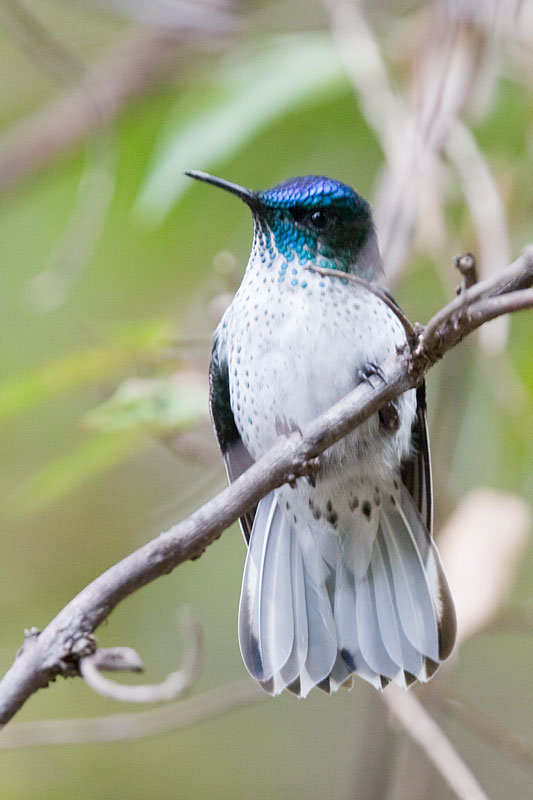
Juan Fernández firecrown’s can currently be found on one far-flung island of Chile’s Pacific coast in the remote Juan Fernandez Archipelago. That island is Robinson Crusoe, and it has been designated an Alliance for Zero Extinction site because it contains this species’ entire global population.
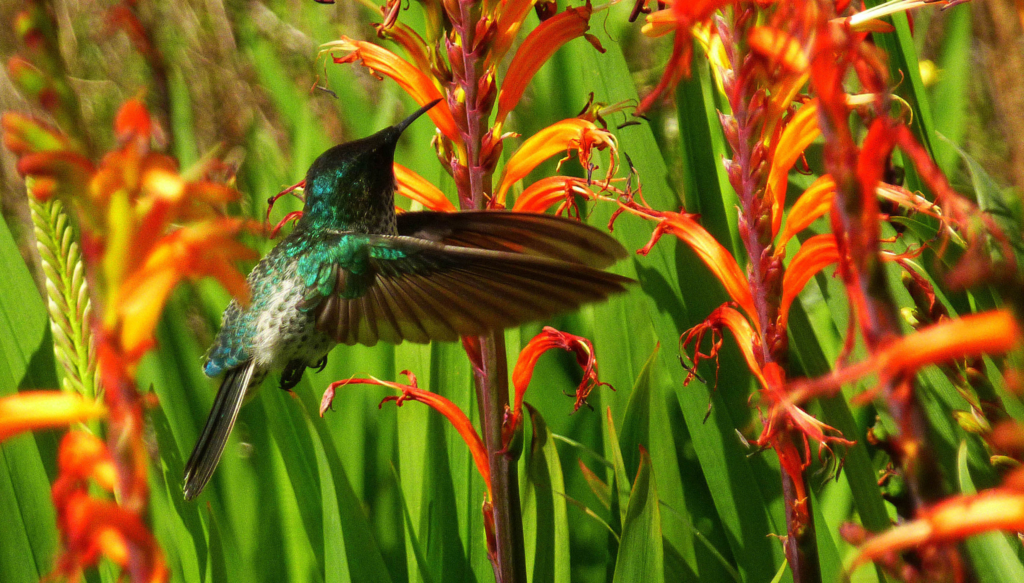
This medium-sized bird likes to live in forests, thickets, and local gardens. During the summertime, males can quite often be seen in the island’s only town, San Juan Bautista, feeding on the “cabbage tree,” which is also sadly an endangered species.
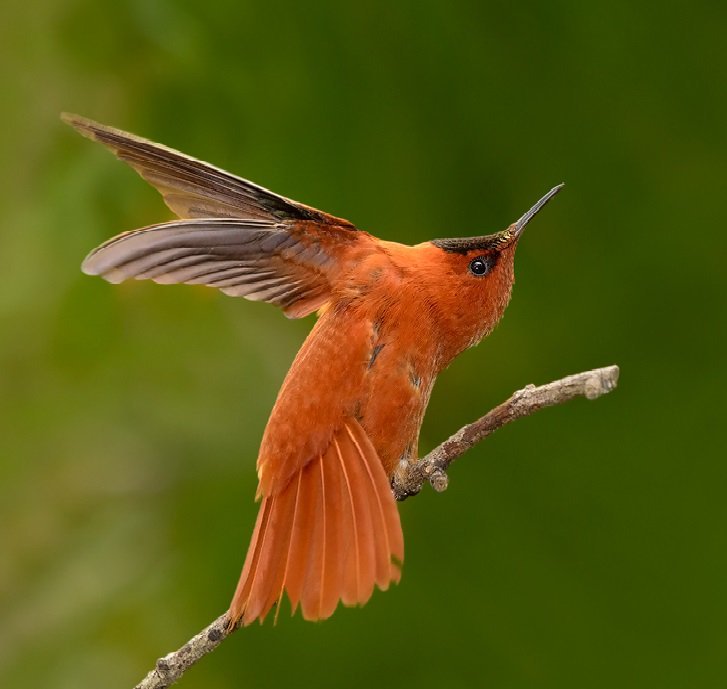
This hummingbird feeds on nectar from a variety of plants. However, it also eats insects, particularly during nesting season, when extra protein is needed to cope with fast-growing young.
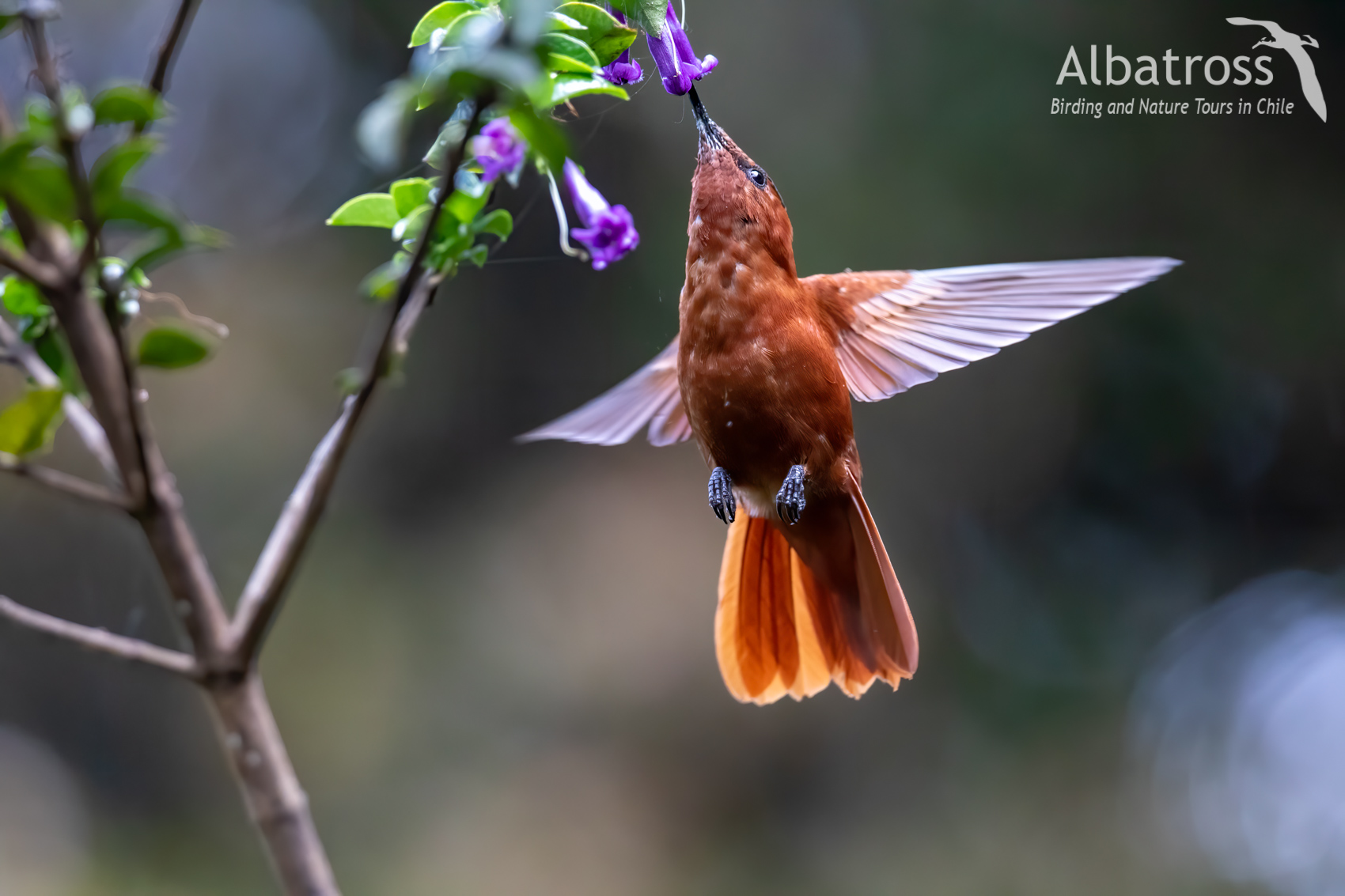
During the breeding season, the female lays two eggs in a small cup-shaped nest about 3-4 meters above ground level. This nest is almost always built in the Chilean myrtle tree.
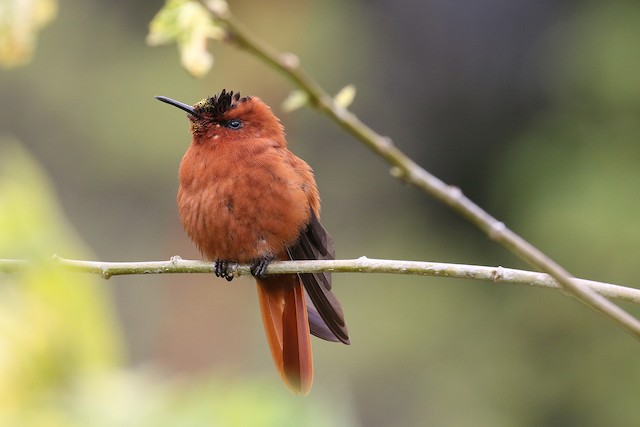
The population of this species has been in a general decline for years. A census made in October 2002 revealed fewer than 200 individual birds and of these only 60 females, although scientifically sound census methods have not yet been used to provide a reliable figure. The species is ranked Critically Endangered by Birdlife International.
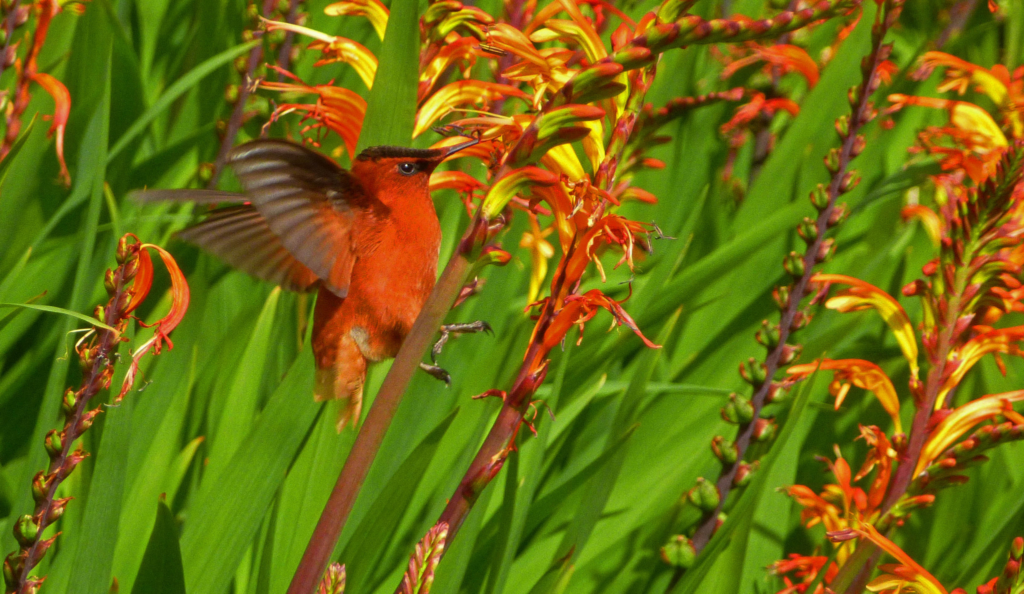
WATCH THIS BIRD RIGHT HERE IN THE VIDEO BELOW:

